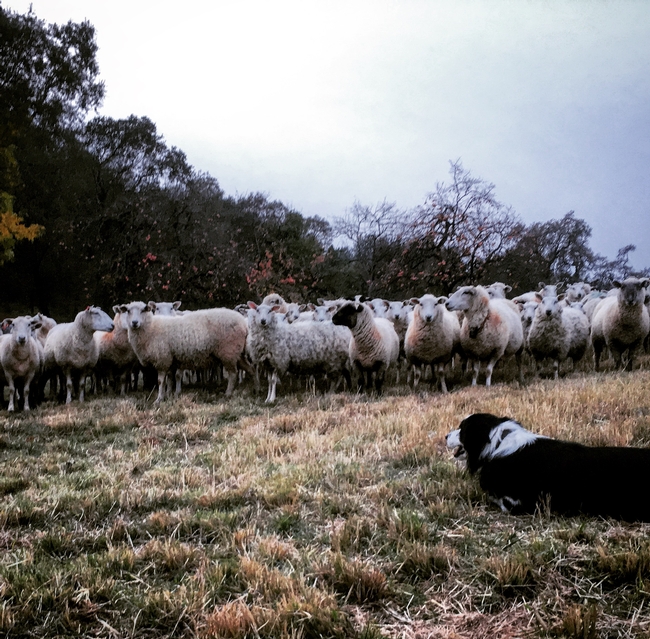
In our operation, there are several ways we can accomplish this work. We can move our portable corral system to the pasture where the sheep are grazing; we can move the sheep back to our corrals; or we can simply use dogs to bunch the sheep in the pasture and catch each animal individually. Being an agricultural economist by training (and somewhat of a economics geek), my first inclination is to compare the costs of each of these alternatives!
Option 1: Move the Corrals: We have a set of homemade portable corrals that incorporate Bud Williams' alley design (a "Bud Box" system). Two of us can dismantle, load and re-assemble this set up in about 45 minutes. This system allows us to put sheep into a race or alley to check eyes and treat infected individuals with a drench dewormer. The work of treating the 39 sheep in this bunch takes about 30 minutes. If we value our own labor at $15/hour, I estimate that this option would cost us $108 in labor (if we include the time it takes to move the corrals back to our headquarters).
Option 2: Move the Sheep to the Corrals: The lambs are currently grazing about 0.34 miles from our corrals. To walk the sheep from this pasture to our corrals, we would need to go through 5 gates and cross over land owned by four different people. The move is not terribly complicated (and our border collies love the work!), but it does take about 20 minutes to walk the sheep to the corrals to be treated - and another 20 minutes to walk them back to the pasture. Treatment time is the same as in option 1 - the total labor cost for option 2 is about $35.
Option 3: Treat the Sheep in the Pasture: My cowboy friends would call this a "rodear," I suppose - this option simply involves holding the sheep in a bunch in the pasture and catching each animal individually. For a group of sheep this size, two good dogs are sufficient. The dogs hold the sheep in a tight group. One of us catches each animal and examines the eye mucous membranes; the other person administers the drench (as needed) and marks the sheep. Any sheep showing anemia is treated with a drench; any sheep without symptoms is not treated. So that we can keep track of which sheep we've examined, we put a blue mark on the rump of those who do not need dewormer and a red mark on the rump of those we treat. Examining 39 lambs and treating those with symptoms takes about 30 minutes - our total labor cost for this option is $15. I suspect that this system is less stressful on the sheep, as well!
Obviously, this simplistic analysis doesn't capture the capital costs of acquiring and training the dogs (or of building the corrals, for that matter). Nor does it account for the cost of feeding and caring for the dogs. It also fails to account for the investment in building our own skills - I certainly could not have treated 39 lambs in 30 minutes when I started raising sheep commercially nearly 15 years ago. That said, our ability to handle livestock and use dogs effectively allowed us to treat 39 lambs before work this morning!
If you're interested in building your own stockmanship and sheep husbandry skills, there are two outstanding learning opportunities next several months:
California Sheep and Goat Grazing School (September 14-15 in Auburn, CA)
Steve Cote's Stockmanship School (October 11-14 near Wells, NV)